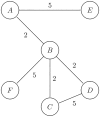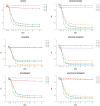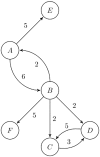Distinctiveness centrality in social networks
- PMID: 32442196
- PMCID: PMC7244137
- DOI: 10.1371/journal.pone.0233276
Distinctiveness centrality in social networks
Abstract
The determination of node centrality is a fundamental topic in social network studies. As an addition to established metrics, which identify central nodes based on their brokerage power, the number and weight of their connections, and the ability to quickly reach all other nodes, we introduce five new measures of Distinctiveness Centrality. These new metrics attribute a higher score to nodes keeping a connection with the network periphery. They penalize links to highly-connected nodes and serve the identification of social actors with more distinctive network ties. We discuss some possible applications and properties of these newly introduced metrics, such as their upper and lower bounds. Distinctiveness centrality provides a viewpoint of centrality alternative to that of established metrics.
Conflict of interest statement
The authors have declared that no competing interests exist.
Figures






References
-
- Freeman LC. Centrality in social networks conceptual clarification. Social networks. 1978;1(3):215–239. 10.1016/0378-8733(78)90021-7 - DOI
Publication types
MeSH terms
LinkOut - more resources
Full Text Sources
Research Materials

